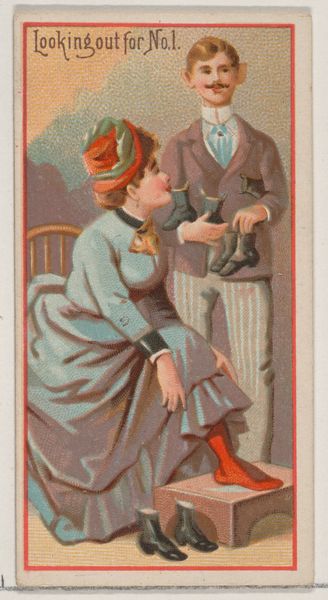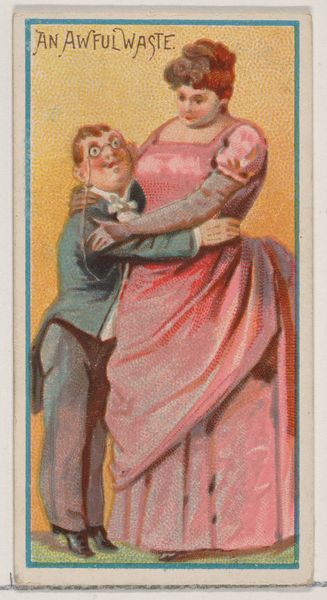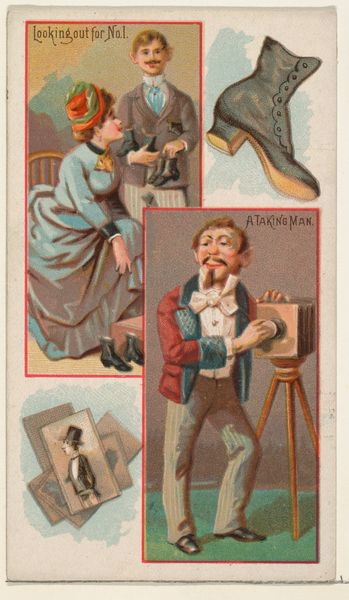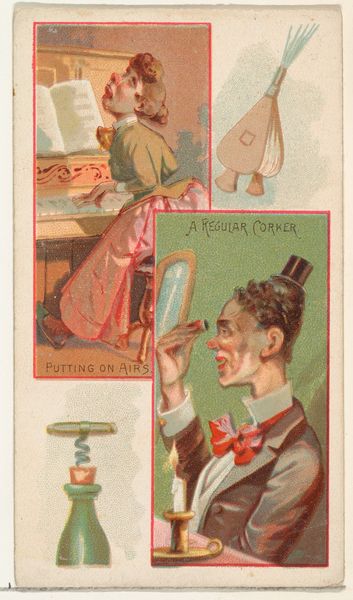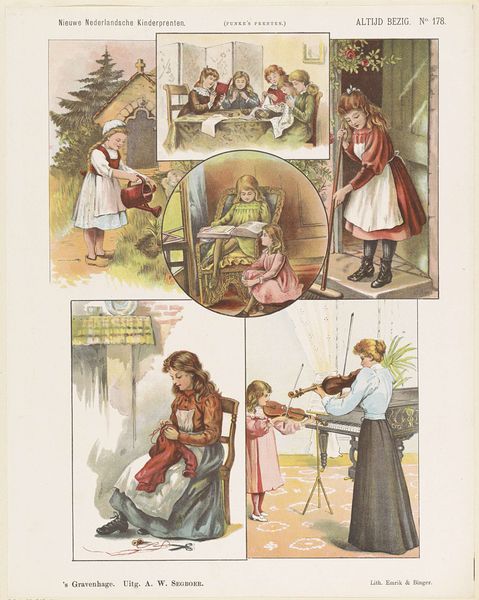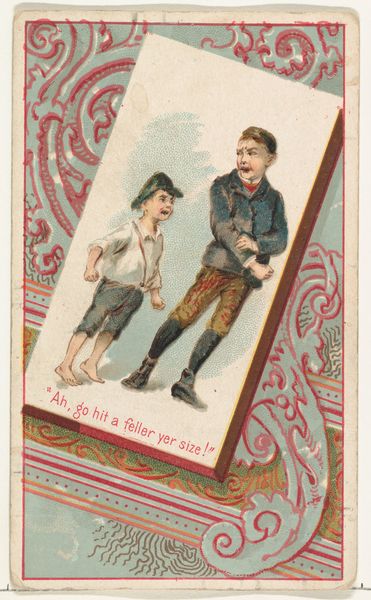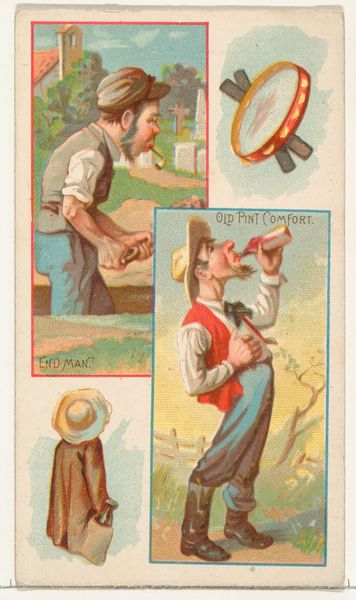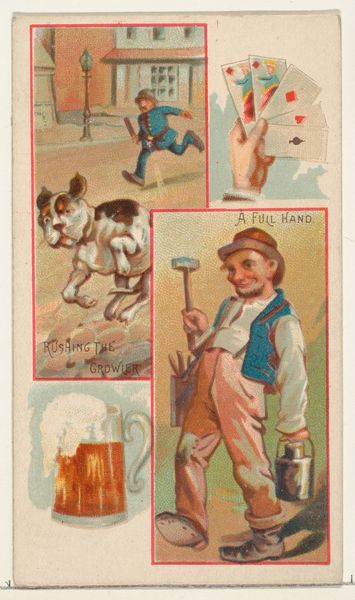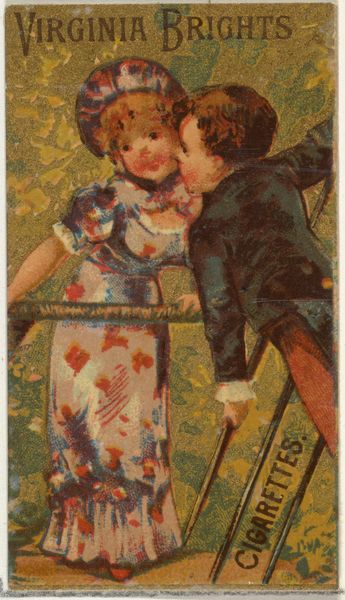
A Bachelor's Error / An Awful Waste, from the Jokes series (N118) issued by Duke Sons & Co. to promote Honest Long Cut Tobacco 1890 - 1893
0:00
0:00
Dimensions: Sheet: 4 1/4 × 2 7/16 in. (10.8 × 6.2 cm)
Copyright: Public Domain
This small card, made around 1900 by W. Duke, Sons & Co., is chromolithography on paper. Chromolithography was a method of making color prints using multiple lithographic stones, one for each color. In this instance, the effect is quite painterly, the printers skillfully imitating the textures of fabric, skin and paper. It’s a great example of the use of industrialized printing techniques for advertising. Tobacco companies would insert these cards into their products as a way to entice customers, and to encourage repeat purchases; the more you bought, the more likely you were to collect a whole series. The relatively cheap printing process allowed for mass production, and distribution, creating a new way of marketing products to the masses. What’s most fascinating here is how these industries intersect, with technological advancements in printing fueling the rise of consumer culture, while also commodifying images and humor for the sake of selling tobacco.
Comments
No comments
Be the first to comment and join the conversation on the ultimate creative platform.
